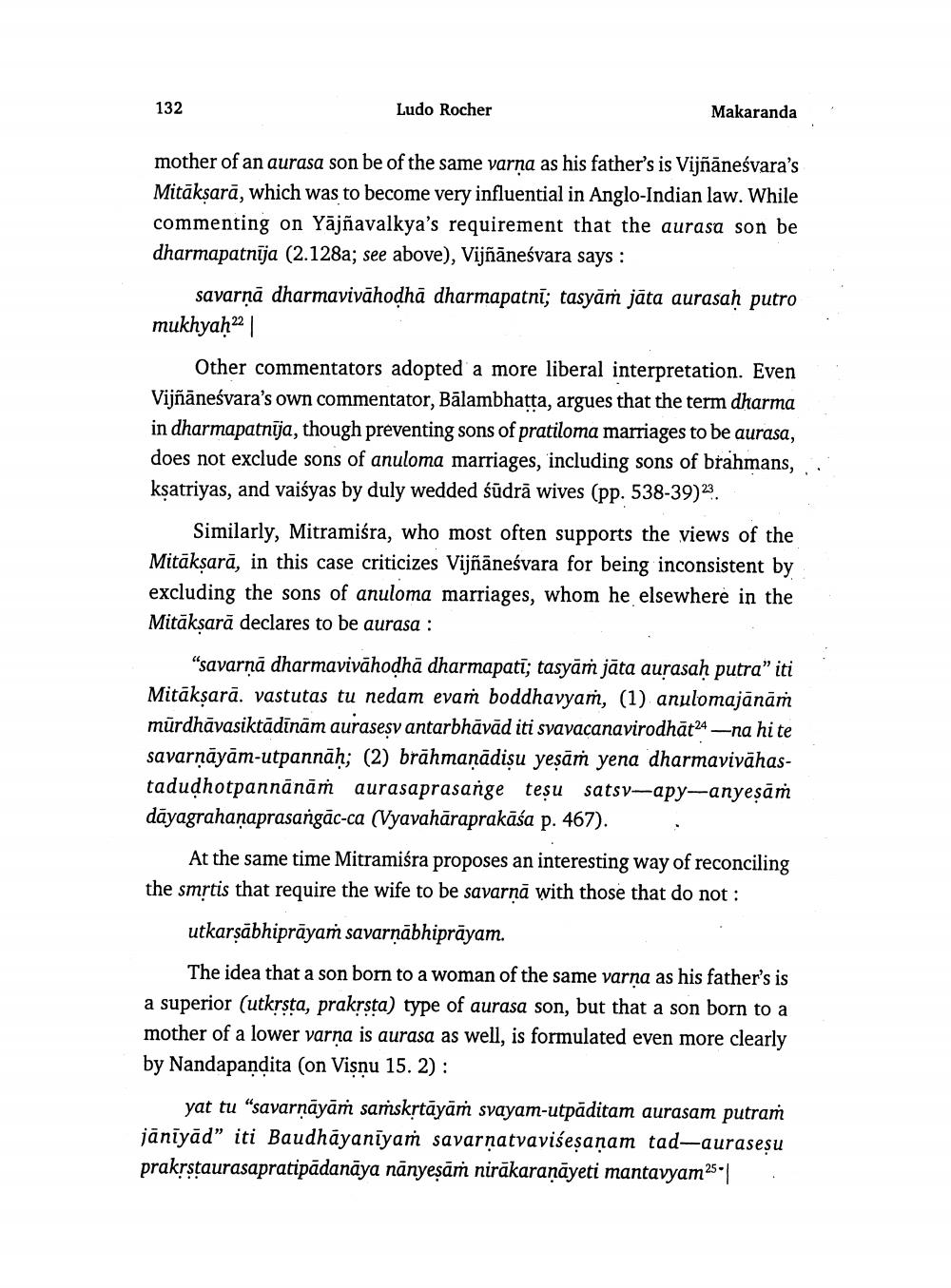________________
132
Ludo Rocher
Makaranda
mother of an aurasa son be of the same varņa as his father's is Vijñāneśvara's Mitāksarā, which was to become very influential in Anglo-Indian law. While commenting on Yājñavalkya's requirement that the aurasa son be dharmapatnija (2.128a; see above), Vijñāneśvara says:
savarnā dharmavivāhodhā dharmapatnī; tasyām jāta aurasah putro mukhyaḥ22 |
Other commentators adopted a more liberal interpretation. Even Vijñāneśvara's own commentator, Bālambhatta, argues that the term dharma in dharmapatnīja, though preventing sons of pratiloma marriages to be aurasa, does not exclude sons of anuloma marriages, including sons of brahmans, kṣatriyas, and vaiśyas by duly wedded śūdrā wives (pp. 538-39)23.
Similarly, Mitramiśra, who most often supports the views of the Mitākṣarā, in this case criticizes Vijñāneśvara for being inconsistent by excluding the sons of anuloma marriages, whom he elsewhere in the Mitāksarā declares to be aurasa :
"savarnā dharmavivāhodhä dharmapatī; tasyām jāta aurasah putra" iti Mitāksarā. vastutas tu nedam evam boddhavyam, (1) anulomajānam mūrdhāvasiktādīnām aurasesv antarbhāvād iti svavacanavirodhāt24 —na hi te savarnāyām-utpannāh; (2) brāhmanādişu yeşāṁ yena dharmavivāhastadudhotpannānāṁ aurasaprasange teșu satsy-apy-anyesāṁ dāyagrahanaprasangāc-ca (Vyavahāraprakāśa p. 467).
At the same time Mitramiśra proposes an interesting way of reconciling the smrtis that require the wife to be savarņā with those that do not :
utkarsābhiprāyaḥ savarnabhiprāyam.
The idea that a son born to a woman of the same varna as his father's is a superior (utkrsta, prakrsta) type of aurasa son, but that a son born to a mother of a lower varna is aurasa as well, is formulated even more clearly by Nandapandita (on Visnu 15. 2):
yat tu “savarnāyāṁ saṁskṛtāyāṁ svayam-utpăditam aurasam putram jānīyād" iti Baudhāyaniyam savarṇatvavisesaņam tad-aurasesu prakrstaurasapratipādanāya nānyeşāṁ nirākaraṇāyeti mantavyam25-||




